Alison Saunders, wife of Mike, vicar of Hungerford, has been appointed Senior Waterways Chaplain of the Kennet and Avon Canal. Waterways chaplains work across the nation’s inland waterways to support boaters in need, helping to resolve a wide range of issues from access to benefits and healthcare to being a listening ear and companion to the lonely and anxious.
Read More
Monthly Archives: May 2022
waterways matters
waterways matters
 Alison Saunders, wife of Mike, vicar of Hungerford, has been appointed Senior
Alison Saunders, wife of Mike, vicar of Hungerford, has been appointed Senior
Waterways Chaplain of the Kennet and Avon Canal.
Waterways chaplains work across the nation’s inland waterways to support boaters in need, helping to resolve a wide range of issues from access to benefits and healthcare to being a listening ear and companion to the lonely and anxious. Chaplains are committed to walking one mile of their towpath each week but most walk much more than that. They are happy to chat to anyone they meet, whether it be boaters, fishermen, cyclists or other walkers, and to help in any and every way they can, if asked.
There are about ten chaplains along the length of the Kennet and Avon. Ali says, “I
would love to see more Waterways Chaplains along the canal, to support boaters and all who use the waterway in any capacity, raising awareness of its potential and the challenges for those who live on it.”
She can be contacted by email or by phone 01488 208341.
aqueduct marina builds green credentials with bilgeaway
Aqueduct Marina, based on the Shropshire Union Canal near Nantwich, is encouraging customers to install River Canal Rescue’s Bilgeaway filter on their narrowboats. The Marina, a fervent advocate of environmentally-friendly solutions, now stocks Bilgeaway in its chandlery and is promoting the filter to its users.
Read More
aqueduct marina builds green credentials with bilgeaway
aqueduct marina builds green credentials with bilgeaway
Aqueduct Marina builds green credentials with Bilgeaway
Aqueduct Marina, based on the Shropshire Union Canal near Nantwich, is encouraging customers to install River Canal Rescue’s Bilgeaway filter on their narrowboats.
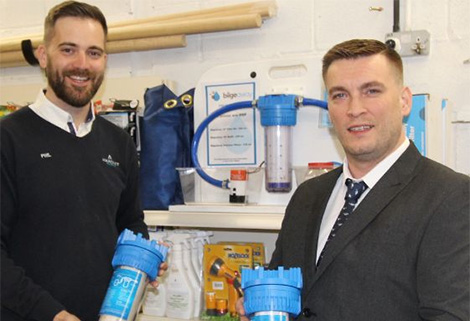 The Marina, a fervent advocate of environmentally-friendly solutions, now stocks Bilgeaway in its chandlery and is promoting the filter to its 147 mooring and 90 hard-standing users, external customers and those buying boats through its brokerage service.
The Marina, a fervent advocate of environmentally-friendly solutions, now stocks Bilgeaway in its chandlery and is promoting the filter to its 147 mooring and 90 hard-standing users, external customers and those buying boats through its brokerage service.
Aqueduct hopes this move takes it one step closer to picking up the UK’s first Inland ‘Clean Marina’ award.
The Marina is already involved in a number of initiatives, including The Green Blue and Clean Marinas, and recently launched its own Greener Marina scheme - a customer communication programme which aims to develop a culture of environmental awareness between staff and customers, helping it gain Cleaner Marina status.
Bilgeaway is described as the world’s ‘first’ environmentally-friendly filtration system. It uses a non-toxic solution to remove contaminants from dirty bilge water, preventing waterway pollution, which are then rendered non-reactive, leaving environmentally-friendly contents in a cartridge for disposal. The housing can be re-used.
The product’s a ‘first’ because while other filter systems trap hydrocarbons, they fail to de-contaminate them, transferring the disposal problem elsewhere (typically a landfill site causing further land-based contamination).
Marina and operations director, Phil Langley, comments: “We are already trying to encourage customers to reduce pollution, emissions and their impact on the environment, and are doing this by promoting the use of solar panels and eco-friendly products.”
RCR managing director, Stephanie Horton, agrees: “Everyone has a responsibility to do their bit and if all boats had a filter installed, in 10 years’ time the waterways environment could look completely different. We’d have clearer canals and rivers and the oil slicks in marinas and harbours would be a thing of the past.”
To find out more visit Bilgeaway and Aqueduct Marina websites.
canal logbooks
canal logbooks
narrowboat logbook and journey planner
by Joseph Gascoigne
My name is Joseph and I live on a Widebeam named H2O with my father Steve. We have lived on the boat since July 2021 and are continuous cruisers; prior to that we lived in Newark On Trent. My dad has always loved boats and fishing, in fact if he's by water he is happy. I on the other hand was a typical teenager who enjoyed playing on my games console, meeting with my friends and doing all of the normal things an 18 year old would do.
So it was a bit of a shock when my dad suggested moving onto a boat. It was a lot of turmoil selling the house and getting rid of so much of the stuff you accumulate when living in a house. At that time I also had the added pressure of my A Levels, but we muddled through. Whilst all that was happening the boat was being built to my dad's design. He had planned it all out before we even had a boat builder, so he would go up to Manchester every week to check on its progress, and I would be at home either taking exams or revising for them.
So the day actually arrived, the boat was launched and we moved on, I hadn't seen the boat for months, so when I actually saw it completed for the first time in the water I thought it was great.
We were a bit nervous when it came to moving it for the first time out of Whilton Marina where it was launched, but when we actually were out on the cut I thought it was brilliant. I enjoy the peace and quiet of a country mooring, long walks with my dog Leo and nights on the boat with the log burner, I think I am turning into my dad!
After a couple of months getting used to canal life , we decided we wanted to start some sort of business. I had noticed that my dad would scribble things down in a notepad, about the moorings we found, the diesel we purchased, what the Wi-Fi was like etc. and was always rummaging through his pad trying to find where he had written something. And that's what gave me the idea of producing a Logbook and Journey Planner.
I produced a draft copy and let my dad fill it in as we travelled, to see what sections needed to be added or edited. Then, when we were both happy with it we looked for a way of printing and publishing it.
After sorting out the printing & publishing aspect, we published my book through Amazon and my dad made a Facebook post telling fellow boaters about it. We had a great response from the community and the book began to sell. In the first week it was the No 3 best selling book in the boating section on Amazon!

The Narrowboat Logbook and Journey Planner contains sections to record your
travels on our waterways. Initially there is a section to record the boat's details, such
as overall dimensions, engine & gearbox model, fuel, waste & water tank capacity.
Then licence and Insurance details and renewal dates. There is a Diesel Log for recording Fuel Purchases, followed by a Propane Gas Log.
The next section is the Travel Planner and Log, which allows you to plan your route for the day's travels and highlight Water Points, Elsan, Moorings and Shops on the way. There are spaces for 120 travelling days.
The following section is the Pre Travel Check List: the daily reminders of things to check before casting off. There are also sections for recording contact details of Friends On The Canal and Places of Interest.
Finally there are Notes Pages and Useful Contact Details, such as CRT, RCR and Environment Agency.
Over the following few months I produced a series of books for the Boating Community, both for Narrowboats and Wide beams, and the response has been great.
My most recent publication has been One Pot Meals For Boaters and for that one again I asked my dad to ask fellow boaters on Facebook for their favourite recipes and again the response was amazing.
We are at present on the Grand Union heading north and the weather makes you feel spring is really on the way. It's nice to see boats moving again and a few more smiles on people's faces after the tough few years we have had.
If you do see us out on the cut, do give us a wave!
 We are continuous cruisers and I was initially concerned that my 18 year old son, Joe, would not adapt to the boating lifestyle. But he really loves it and started looking for some sort of business that he could run from the boat that would also be to do with living on the waterways. He came up with the idea of a range of books for boaters and as his A levels were in media and business, book design sort of fell into that.
We are continuous cruisers and I was initially concerned that my 18 year old son, Joe, would not adapt to the boating lifestyle. But he really loves it and started looking for some sort of business that he could run from the boat that would also be to do with living on the waterways. He came up with the idea of a range of books for boaters and as his A levels were in media and business, book design sort of fell into that.
Logbooks are available through Linktree or Amazon.
published so far...
- one pot meals for boaters
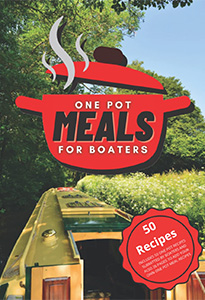
- narrowboat logbook and journey planner
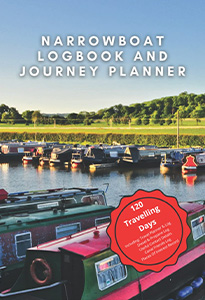
- narrowboat service & maintenance logbook

- narrowboat moorings logbook
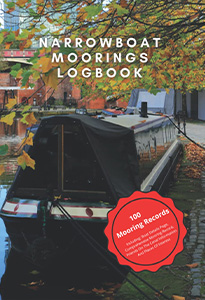
- canal holiday 14 day planner
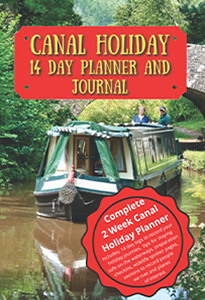
- narrowboat fit-out logbook
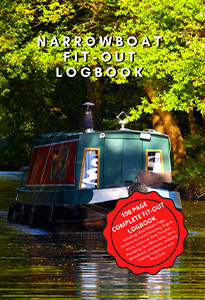
- widebeam fit-out logbook
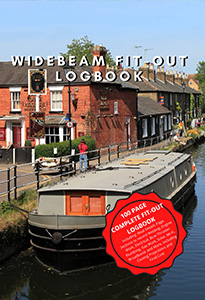
keith harris
featured author - summer 2022
keith harris
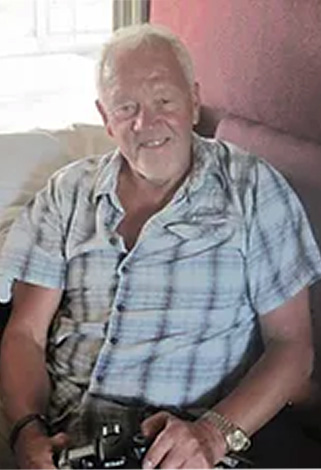 I was born and brought up in the English seaside town of Hastings, many miles from the nearest navigable canal. I have always been drawn to the sea and joined the local Sea cadets when I was thirteen. We had a small fleet of retired Royal Navy boats that we had to launch from the shingle beach at Bulverhythe.
I was born and brought up in the English seaside town of Hastings, many miles from the nearest navigable canal. I have always been drawn to the sea and joined the local Sea cadets when I was thirteen. We had a small fleet of retired Royal Navy boats that we had to launch from the shingle beach at Bulverhythe.
Most of my summer holidays were spent at the “Unit” where we were given an almost free rein to find ourselves and hopefully learn by our mistakes. We had a 27ft Montague-rigged whaler which we once sailed to Rye, fourteen miles away for a camping weekend, a couple of RNSA dinghies and the boats that I loved the best, the dories. These were designed as beach landing boats and were crewed with four pulling oars and a steering oar.
I was fairly light in those days - someone said I was too light for heavy work and too heavy for light work and so I invariably landed the role of coxswain. They were fantastic surf boats, being rounded at both ends rather like an elongated coracle, and we would spend hours going in and out over the waves.
We had to drag the boats down the shingle on greased slides to get afloat, which when the tide was out would involve 50 or 60 yards across the sand. On one occasion when I was steering, I saw an enormous roller approaching. I couldn’t say anything to the crew who of course had their backs to the wave, as I didn’t want to distract them. All I could do was to encourage them to “pull up hard” and fight with my steering oar to hit the wave square on the bow.
On the bow oar was a guy called Chris who was older and bigger than the rest of us. He was a Petty Officer (probably eighteen at the time) and an “old” hand. In hindsight I think he might have been better suited to rowing aft but hind-sight and all that… As the wave tumbled towards the boat it towered above us over six feet high. The bow lifted and Chris went up in the air with it. The boat reared up and then crashed back down with a thump leaving Chris suspended in mid-air, oar still firmly grasped in his hands.
Then the immovable object and the irresistible force kicked in and the inevitable happened as the boat began to rise up again, gravity took over and Chris came crashing back down. He hit the thwart with such a force that it split in two and left him sprawled on the bottom boards, legs in the air bravely still clutching his oar which was pointing to the sky.
It was as much as I could do to keep the boat heading into the waves as I now had two oars pulling on the port side against just one functioning to starboard. By the grace of God, and I like to think a little bit of good seamanship, we survived the next couple of breakers intact before I managed to turn the boat around in a trough and head back for the beach.
I should add here that not one of us was wearing a life-jacket. I was fifteen and although we didn’t properly understand the implications at the time, we had been allowed a valuable freedom to test ourselves and I think it gave us confidence and character which stood us in good stead for the rest of our lives.
Most of my contemporaries from those days went on to make a success of their lives. One gave up a life at sea as a Master Mariner and then became a GP and lifeboat doctor. Another was a senior captain with BP Tankers, one a Pilot guiding cruise ships through the Alaskan Fiords and yet another became an engine room artificer in nuclear submarines.
Unfortunately because of the nanny state and the dreaded H&S, protective parents and compensation culture, amongst other things, kids don’t have that option anymore. They have substituted real-life adventure with make believe computer games and I phones.

I was thirty before I discovered that there was an extensive and fascinating network of over 2000 miles of canals in Britain. We hired a boat from the little-known village of North Kilworth in Leicestershire in 1976. Our friends Marion and Malcolm from Southampton had joined the local canal society and found out all about it and we travelled with them and our kids who were five and six at the time to pick up the boat in Marion’s Ford Anglia, which she called Bruce! We were starting on an unforgettable week of discovery and adventure around the canals of the Midlands that would leave a lasting impression and hook me for life.
We certainly had an eventful week. Tanya, aged 6 at the time was stung by a bee, Mark (5) fell in near Rugby, we had a complete double mattress wound around the prop in Birmingham, and were aground overnight stuck alongside a camping boat full of Boy Scouts in a remote spot somewhere between Leamington Spa and Braunston. It was that remote that it took Malcolm and I half an hour to walk to the nearest pub! This was in 1976 and I have to say that things in a lot of areas have improved since then, although a lot more have worsened, but that’s another story.
In spite of all this I developed a love and fascination with canals which has never left me. I was eventually able to buy my own narrowboat in 1986 and was lucky enough to fulfil another long-term ambition in 1998 when I acquired the beautiful replica Dutch Luxemotor, Saul Trader.
I had always had an urge to write, and once started a book about preserved railways but for various reasons it never got finished. With the advent of Kindle and Amazon, self-publishing has become a lot easier. I think it has opened up endless opportunities for would-be authors, some good and some maybe not so good. I think grammar, punctuation and spelling accuracy are important and I try to make sure my writing is thoroughly checked. Somebody commented after reading my first book that it was “written in the vernacular.” Well sorry - it was actually written in the study.
It is a long and sometime laborious process, but infinitely worthwhile and fun. I often have a chuckle myself at some of my jokes, and I hope that you do too. The initial object of the exercise was to record my travels for my own benefit. Kindle has made it possible to spread the news further afield and I can only hope that my readers will also find some enjoyment from my ramblings and learn a little about the lore of the cut.

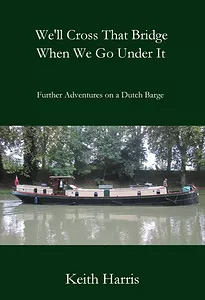
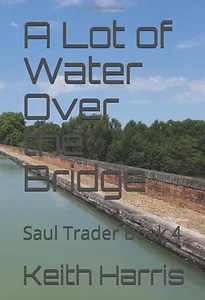

The Saul Trader books are available to buy in print or electronically. Visit Keith's shop for more information on each book and to buy. You can also find out about another of Keith's books which is currently in the pipeline!
narrowboat logbook and journey planner
narrowboat logbook and journey planner
by Joseph Gascoigne
My name is Joseph and I live on a Widebeam named H2O with my father Steve. We have lived on the boat since July 2021 and are continuous cruisers; prior to that we lived in Newark On Trent. My dad has always loved boats and fishing, in fact if he's by water he is happy. I on the other hand was a typical teenager who enjoyed playing on my games console, meeting with my friends and doing all of the normal things an 18 year old would do.
So it was a bit of a shock when my dad suggested moving onto a boat. It was a lot of turmoil selling the house and getting rid of so much of the stuff you accumulate when living in a house. At that time I also had the added pressure of my A Levels, but we muddled through. Whilst all that was happening the boat was being built to my dad's design. He had planned it all out before we even had a boat builder, so he would go up to Manchester every week to check on its progress, and I would be at home either taking exams or revising for them.
So the day actually arrived, the boat was launched and we moved on, I hadn't seen the boat for months, so when I actually saw it completed for the first time in the water I thought it was great.
We were a bit nervous when it came to moving it for the first time out of Whilton Marina where it was launched, but when we actually were out on the cut I thought it was brilliant. I enjoy the peace and quiet of a country mooring, long walks with my dog Leo and nights on the boat with the log burner, I think I am turning into my dad!
After a couple of months getting used to canal life , we decided we wanted to start some sort of business. I had noticed that my dad would scribble things down in a notepad, about the moorings we found, the diesel we purchased, what the Wi-Fi was like etc. and was always rummaging through his pad trying to find where he had written something. And that's what gave me the idea of producing a Logbook and Journey Planner.
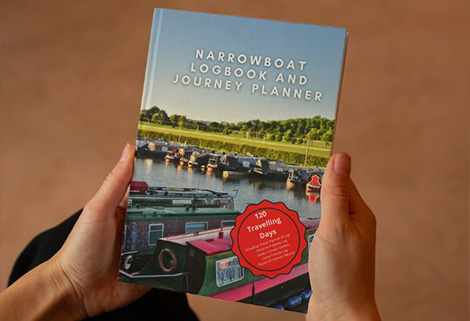

I produced a draft copy and let my dad fill it in as we travelled, to see what sections needed to be added or edited. Then, when we were both happy with it we looked for a way of printing and publishing it.
After sorting out the printing & publishing aspect, we published my book through Amazon and my dad made a Facebook post telling fellow boaters about it. We had a great response from the community and the book began to sell. In the first week it was the No 3 best selling book in the boating section on Amazon!
The Narrowboat Logbook and Journey Planner contains sections to record your
travels on our waterways. Initially there is a section to record the boat's details, such
as overall dimensions, engine & gearbox model, fuel, waste & water tank capacity.
Then licence and Insurance details and renewal dates. There is a Diesel Log for recording Fuel Purchases, followed by a Propane Gas Log.
The next section is the Travel Planner and Log, which allows you to plan your route
for the day's travels and highlight Water Points, Elsan, Moorings and Shops on the
way. There are spaces for 120 travelling days.
The following section is the Pre Travel Check List: the daily reminders of things to check before casting off. There are also sections for recording contact details of Friends On The Canal and Places of Interest.
Finally there are Notes Pages and Useful Contact Details, such as CRT, RCR and Environment Agency.
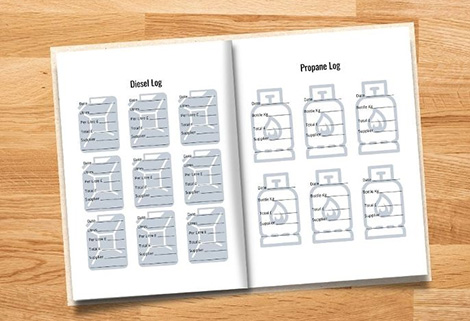
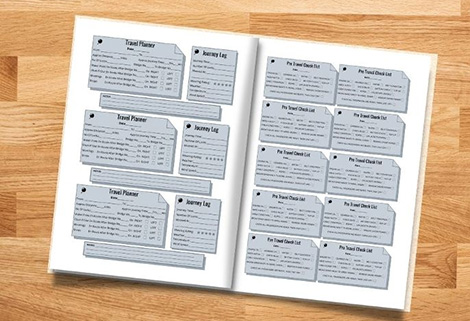
Over the following few months I produced a series of books for the Boating Community, both for Narrowboats and Wide beams, and the response has been great.
My most recent publication has been The Boater's One Pot Cookbook and for that one again I asked my dad to ask fellow boaters on Facebook for their favourite recipes and again the response was amazing.
We are at present on the Grand Union heading north and the weather makes you feel spring is really on the way. It's nice to see boats moving again and a few more smiles on people's faces after the tough few years we have had.
If you do see us out on the cut, do give us a wave!
magnetic pull
magnetic pull
magnet fishing with Sophie Doyle

My name is Sophie Doyle and I am a magnet fisher.
I clean up our waterways by using quality Magnets, grappling hooks and winches. I remove items which are harmful to wildlife and a danger to those who use the waterways, like Narrowboaters and Bargees.
I found the Hobby by watching others do it on YouTube and have Magnet Fished for several years now. You would be very surprised what some people throw into the waterways! There are lots of laughs to be had with friends in the Hobby. It's also great to socialise outdoors.
I find submerged items such as stolen safes, motorcycles, bikes, knives, firearms and even World War Ordnance.
I have previously found three Grenades and a 157mm World War Artillery Shell. The Artillery Shell and one of the grenades were still Live and had to be destroyed in a controlled explosion by the Bomb Squad.
The oldest thing I have found has got to be the gunpowder filled hand grenade which I have managed to date to 1651. I am extremely happy with this find!
Any found firearms are handed to Police on scene and knives are put into a Police Amnesty Bin, to ensure that they don't get into the wrong hands again. Criminals tend to use the waterways as a way of discarding evidence, that's where I come in and retrieve it. I successfully retrieved evidence to aid in a 1990's Cold Case.
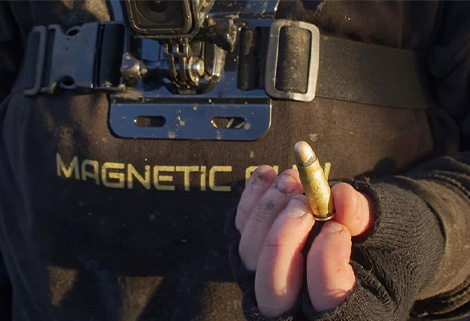
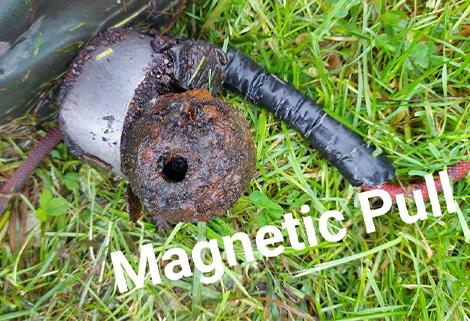
I travel around the Country but mostly the North West Region where I'm from and I enjoy meeting up with other Magnet Fishers.
I often give items back to passing Boaters as I tend to find a lot of Fenders, Mooring Pins and Lock Keys. I'm happy to help retrieve lost items for Boaters.
We have a Magnet Fishing Committee working with Canal & River Trust to legalise Magnet Fishing. In my experience the CRT have always been very grateful for my help. I have a good relationship with CRT, they know I always get rid of anything pulled out of the Canals via "Dippers & Scrappers" on Facebook; a directory of free Scrappers. I take non-metal items like tyres and plastics to the Tip myself.
The hobby does come with risks; however these can be managed. For example, by wearing thick waterproof gloves, watching your footing, correct manual handling, using sharps bins, never going alone. Also children should always be supervised and wear Personal Flotation Devices (PFDs).
There is also a Facebook Group called "Dippers Identify" so that if a Magnet Fisher anywhere in the world finds something that looks like Ordnance, they can post a photo in the Group and get a very quick response with an accurate ID on what it is. The general rule is, "If in doubt call them out" immediately. Royal Logistic Corps (The Bomb Squad) have always been extremely polite and professional when I have found Explosives.
A lot of Magnet Fishers are very much into History, and there is a lot of it in our waterways buried in the layers upon layers of Silt.
My newest Magnet from OnlineMagnets can lift 1800kg (nearly two tonnes), which also makes the Magnet sink deeper with more chance of finding historic items.
The hobby itself is very addictive and has been growing in popularity for a number of years.
It's important for all Magnet Fishers to remove all of their scrap by using a free Scrapper on "Dippers & Scrappers" on Facebook.
 Sophie Doyle is a Magnet Fisher from Bolton, Greater Manchester. She says "I'd like to publicise my hobby and the free service I provide. I'd encourage anyone to contact me at Magnetic Pull if a particular section of Canal needs some items removing or if you fancy a go at Magnet Fishing.
Sophie Doyle is a Magnet Fisher from Bolton, Greater Manchester. She says "I'd like to publicise my hobby and the free service I provide. I'd encourage anyone to contact me at Magnetic Pull if a particular section of Canal needs some items removing or if you fancy a go at Magnet Fishing.
You can follow Sophie on Facebook and see her in action on YouTube
life with a composting toilet
life with a composting toilet
We are Nick and Fiona, and since Autumn 2017 we have lived full time on our 63ft narrowboat Meand’er with the plan of enjoying the waterways over the coming years.
Our voyage into the world of composting toilets began during lockdown! We had been on a couple of long trips on our narrowboat and experienced huge issues with broken elsan points and the frustrations of trying to find somewhere to empty our cassettes.
We had talked about composting toilets before but truly began investigating further during lockdown - I think my husband wanted to keep me amused!
We soon discovered that there were a variety of different styles of composting toilet and we needed to narrow down the right one for us on our narrowboat. We would be using the same space as the cassette toilet did so it had to fit!. Another factor was capacity of the toilet as although we were currently going nowhere, the future plan once retirement happened was to explore the waterways - hopefully not having to worry about elsan points!
We read many reviews and joined groups on social media to find out more, and there seemed to be a big difference of opinion on which toilet to purchase. Price was obviously a major consideration for some people and this could vary from making your own DIY toilet up to spending £1000. Now this may seem slightly excessive but as hubby pointed out, it was going to be in regular use and hopefully the only one we ever bought!
After much investigation we knew we needed a toilet with both a large liquid capacity as well as a large solid capacity. The final question was did we need a fan or not? The purpose of the fan is to remove all odours from the solids container. It sounded like a great idea and as we had a 12v volt feed to our cassette toilet, we would be able to utilise it.
We chose an Airhead toilet for its design, capacity, mechanical stirring system and ease of use when emptying. The only part likely to need replacing in the future would be the fan and they were easy to pick up. Installing the Airhead was fairly painless as we had plenty of space and we were able to route the hose for venting through a hole in the cupboard behind the toilet and up through the roof of the boat where there was an existing hole which had been capped.
Nick made a wooden plate, shaped to the roof, to attach the fan housing onto and after uncapping the hole we fixed a new mushroom vent to the roof.


The fitting of the actual toilet was probably the easiest part of the whole process!
We have always used Coco Coir in our solids container which we purchase in brick form, packs of 6 from Amazon. There has been a fair amount of experimenting with these bricks as to how much/how little water to use for reconstitution. We now keep the brick dry and break by hand with the aid of a large screwdriver!
To start off with we only used one brick but we have now found over the months that one and a quarter bricks is what works best for us - we are both vegetarian which means our poop is likely to have a higher water content. The solids container is changed every 3-4 weeks and that is with both of us using it full time.
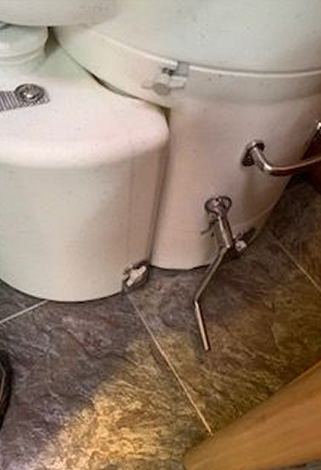

So where do we empty the solid’s container I can hear you asking!? Well we are fortunate to currently be resident in a very forward-thinking marina and they agreed to install composting bins! There are 4 in total with each one being used for 3 months and then left to compost for 12 months before emptying. There is currently another couple using the bins and we know a number of other boaters are thinking of changing to a composting toilet. As ours is a private marina these bins will only ever be available to marina moorers. For when we are cruising we have 3 plastic boxes with lids, specifically made for solid waste, for emptying into which sit neatly under the floor in the bow and no they do not smell at all! (For those who don’t know, it is the urine mixed with the solids that causes the odours!)
When we first started using the toilet we could often be observed sniffing our outside vent to see if there was any smell but I can happily report it is just an earthy smell if anything at all. Having the extra boxes will allow us to be cruising for approximately 16 weeks at a time without needing to return to base and empty into the composting bins.
Our liquids container has a sight glass at the front so you know when it is full, but as many Airhead owners will tell you it takes a few months to get into the habit of not only checking the sight glass but also listening to the sound as you urinate! You definitely know it is full when you suddenly get wet feet as it has overflowed - we have purchased extra bottles so actually have three!
We use Ecover toilet cleaner to clean the toilet bowl and have put it into a spray container. We also put a couple of squirts in each bottle before use as this helps keep the bottles spotless and also stops there being any urine smell.The urine bottle is emptied in the Elsan but can also be emptied in an ordinary toilet or under a hedgerow/under a tree when out - as long as it is not near a water source.
Are we pleased with our toilet? Yes and we wouldn’t change it for anything else! It gives us so much more freedom when we are cruising and takes the headache away of planning where we can empty.
For access to more in-depth blogs from Fiona and Nick, and for more information on various types of Composting Toilets, visit the Practically Green website

